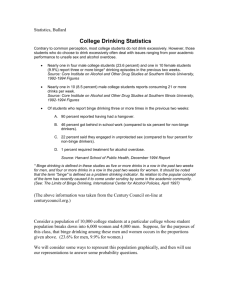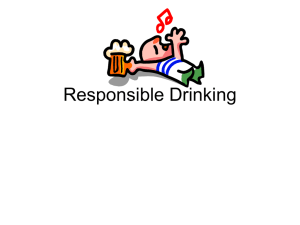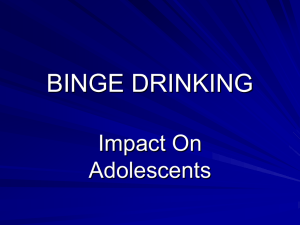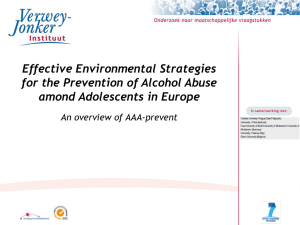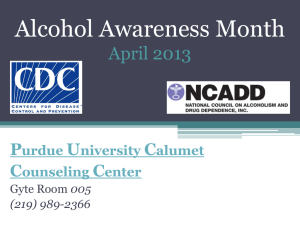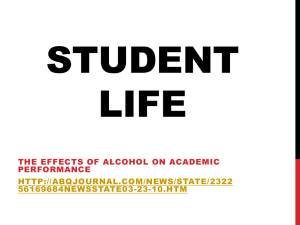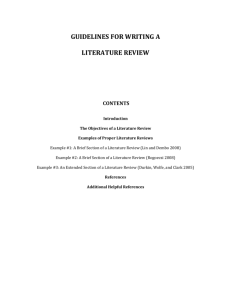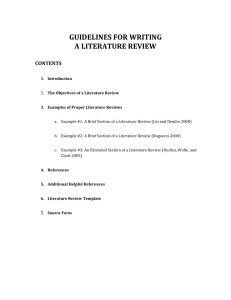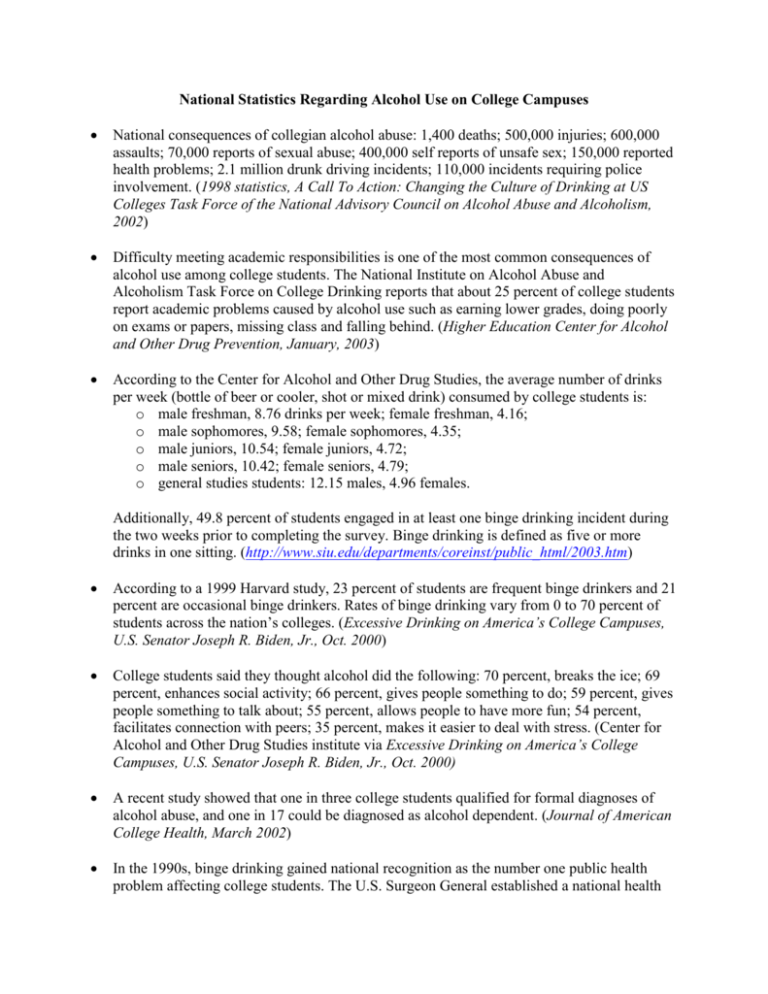
National Statistics Regarding Alcohol Use on College Campuses
National consequences of collegian alcohol abuse: 1,400 deaths; 500,000 injuries; 600,000
assaults; 70,000 reports of sexual abuse; 400,000 self reports of unsafe sex; 150,000 reported
health problems; 2.1 million drunk driving incidents; 110,000 incidents requiring police
involvement. (1998 statistics, A Call To Action: Changing the Culture of Drinking at US
Colleges Task Force of the National Advisory Council on Alcohol Abuse and Alcoholism,
2002)
Difficulty meeting academic responsibilities is one of the most common consequences of
alcohol use among college students. The National Institute on Alcohol Abuse and
Alcoholism Task Force on College Drinking reports that about 25 percent of college students
report academic problems caused by alcohol use such as earning lower grades, doing poorly
on exams or papers, missing class and falling behind. (Higher Education Center for Alcohol
and Other Drug Prevention, January, 2003)
According to the Center for Alcohol and Other Drug Studies, the average number of drinks
per week (bottle of beer or cooler, shot or mixed drink) consumed by college students is:
o male freshman, 8.76 drinks per week; female freshman, 4.16;
o male sophomores, 9.58; female sophomores, 4.35;
o male juniors, 10.54; female juniors, 4.72;
o male seniors, 10.42; female seniors, 4.79;
o general studies students: 12.15 males, 4.96 females.
Additionally, 49.8 percent of students engaged in at least one binge drinking incident during
the two weeks prior to completing the survey. Binge drinking is defined as five or more
drinks in one sitting. (http://www.siu.edu/departments/coreinst/public_html/2003.htm)
According to a 1999 Harvard study, 23 percent of students are frequent binge drinkers and 21
percent are occasional binge drinkers. Rates of binge drinking vary from 0 to 70 percent of
students across the nation’s colleges. (Excessive Drinking on America’s College Campuses,
U.S. Senator Joseph R. Biden, Jr., Oct. 2000)
College students said they thought alcohol did the following: 70 percent, breaks the ice; 69
percent, enhances social activity; 66 percent, gives people something to do; 59 percent, gives
people something to talk about; 55 percent, allows people to have more fun; 54 percent,
facilitates connection with peers; 35 percent, makes it easier to deal with stress. (Center for
Alcohol and Other Drug Studies institute via Excessive Drinking on America’s College
Campuses, U.S. Senator Joseph R. Biden, Jr., Oct. 2000)
A recent study showed that one in three college students qualified for formal diagnoses of
alcohol abuse, and one in 17 could be diagnosed as alcohol dependent. (Journal of American
College Health, March 2002)
In the 1990s, binge drinking gained national recognition as the number one public health
problem affecting college students. The U.S. Surgeon General established a national health
goal or reducing college binge drinking by 50 percent by the year 2010. The World Health
Organization convened a conference to address binge drinking. (Journal of American College
Health, March 2002)
According to a March 2004 article in the Psychology of Addictive Behaviors journal, parents
continue to have an influence on drinking behavior after students graduate from high school.
Higher levels of perceived parental involvement were associated with lessened peer influence
and alcohol use and problems among recent high school graduates.
Between 1993 and 2001, students at colleges participating in a study published in the Journal
of American College Health made remarkably little change in binge drinking behavior, with
44.4 percent of the students participating in this behavior. (Journal of American College
Health, March 2002)
The cost of underage drinking is about $53 billion a year, including $18 billion associated
with traffic crashes. In fact, 57 percent of frequent binge drinkers and 40 percent of
occasional binge drinkers admit getting behind the wheel after drinking. (Dying to Drink:
Confronting Binge Drinking on College Campuses, Harvard researcher Henry Wechsler and
science writer Bernice Wuethrich, http://www.hsph.harvard.edu/cas/Documents/dyingarticle/)
The "Snapshot of Annual High-Risk Drinking Consequences," from the National Institute on
Alcohol Abuse and Alcoholism, provides some additional national information: 1,400
college students between the ages of 18 and 24 die each year from alcohol-related
unintentional injuries, including motor vehicle crashes; 500,000 students between the ages of
18 and 24 are unintentionally injured under the influence of alcohol; more than 600,000
students between the ages of 18 and 24 are assaulted by another student who has been
drinking.
-end-

